|
with Rich Piscopo March 17 During this class, we explored the sublime concept of the existence of a single, underlying, fundamental, unifying thought from which all other thoughts arise. This is a big, abstract idea, suitable for a college level class, and, understandably, the going was slow at first. By the end of class, however, we made some headway and some students were beginning to grasp it. But, we need to continue delving its depths in next week's class before we clearly and distinctly see the light of day. Here is what we covered thus far: I needed to lay some common groundwork before embarking on our intellectual expedition. After reviewing Plato's Theory of Forms, I introduced the concepts of Lao Tzu's Tao, Hinduism's Brahman, Buddhism's Dharmakaya, Ralph Waldo Emerson's Universal Being, the Unified Field Theory of physics, and the Wu Chi of Tai Chi philosophy. We then explored how each of these concepts could be considered to be one, underlying, fundamental thought. In discussing the Theory of Forms, a student astutely asked how we know we are all perceiving the same three-dimensional representation of the Form, thereby introducing the idea of relativity into our dialogue. When discussing the Unified Field Theory, I used the metaphor of an underlying, universal river flowing through the ground of Being, connecting all things. I also used the analogy of the myriad things in the universe sharing a single, common form of energy. As if everything in the universe was made of the same substance [energy], only manifest in different and unique ways [Quantum Physic's String Theory?]. For example, let's say everything was made of gold. All things would have at their core the atomic structure of gold, however, they would just be expressed in different and unique shapes. I went on to say that this energy is expressed on planet earth in trillions of different manifestations. Every insect, worm, reptile, leaf, blade of grass, bacterium, and human, all share this energy in the form of DNA. Another student shared Lao Tzu's and Fritjof Capra's perception by saying that words seemed inadequate to express what we are referring to. Capra wrote The Tao of Physics, one of our source books. She went on to say that this energy we are discussing seems to be a "surging, rushing, force of life, running through all things." I encouraged her intuitive perception, and asked her if one would be able to paint this force, since words do seem inadequate to express it. I do believe this life force was what Van Gogh was trying to capture in his painting, "Starry Night"; or what Dylan Thomas refers to in his poem, "The Force That Through the Green Fuse Drives the Flower" (drives me also). Then she asked, "Does this life force age? The manifestations age, but does the force age?" This profound question led us into a discussion about the conservation of energy. Two other students reminded us that energy cannot be created or destroyed, only transformed. She went on, "Even if this energy force existed for only one second, it would still be infinite." This statement reminded us of the Big Bang Theory, so we discussed the repercussions of it. Her inspired flash of thoughts ended by her asking, "Is life made out of the same stuff as death?" We were out of time at this point, but I did refer the class to the Zen Master Hoshin who predicted the moment he was going to die. Just before he passed he dictated the following poem, "I came from brilliancy, And return to brilliancy. What is this?" I believe this is related to the notion of the drop of water returning to the ocean. "Is life made out of the same stuff as death?" We shall continue our expedition in our next class by plumbing the depths of this weighty question. March 24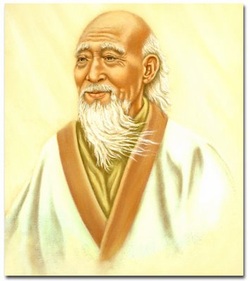 Lao Tzu Lao Tzu We returned to the surface after plumbing the depths of Being, and, fortunately, no one got the bends. We reviewed the concept of the existence of one, underlying, fundamental thought from which all other thoughts arise. This led to a dialogue about the search for the Ground of Being. As far back as the Pre-Socratics, our Western culture has been searching for a single, fundamental, unifying essence common to all things -- the Ground of Being. Does it exist? Or is everything we perceive relative to our perspective? During our dialogue about Being, the notion of Nothingness arose. I referred the class to Jean-Paul Satre's important work, Being and Nothingness. When discussing whether nothingness exists or not, a student said, "It's not nothingness, it's the unknown." It certainly is unknown. For now, we all agreed on the point that nothingness defies description. For, as soon as we describe it, it springs into existence. True nothingness, as with the similar concept of Wu Chi of Tai Chi philosophy, is beyond our dualistic mind set. Are we capable of thinking about true nothingness? As Lao Tzu says in chapter one of the Tao Te Ching, "The Tao that is spoken is not the eternal Tao." As soon as we speak it, we name and categorize it, and therefore limit it. Most likely, we will visit this concept of Being and Nothingness again in our philosophical explorations. In the meantime, I do not think it is going anywhere. It will be there waiting, in profound silence. with Sally Zeiner Causing StaticTo learn about static electricity, we played with balloons in class. We rubbed them on our hair, silk, and cotton to see which one generated the most static electricity. We experimented with sticking them to walls and tables. Ask your child what happened when we blew on the balloon? Did it fall off the wall? Did the balloon roll off the table? What happened when two balloons hung from strings close together? Did they move? with Ed Insel PERT Charts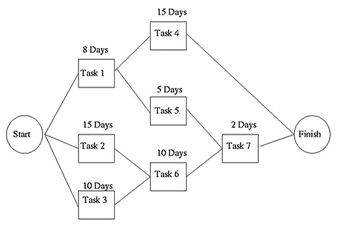 Students started by comparing their PERT chart homework assignments, finding their errors, and producing a final shared PERT chart for their project. They learned how they can be used to get tasks in the proper sequence and to estimate expense and time-to-completion. The kids brought in some fascinating current events for discussion. They absolutely nailed the intent of this part of our course: finding socially important topics (school fire, lost Malaysian plane, Ukrainian tensions, etc.) and highlighting the role that engineering plays (arson investigations, land-and space-based flight tracking, image processing, natural gas transportation, failure analysis, etc.). It was such a good discussion that I let it run and delayed starting the next topic, but this means the kids will need to do some reading before our next session. Homework for Next Session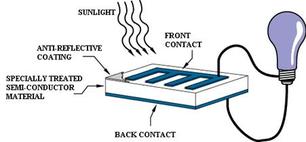 Operation of a basic photovoltaic cell Operation of a basic photovoltaic cell Assignment 1 Each week we will have two students choose the current events. Choose a current event and be prepared to explain 1) the event they chose and 2) the role that science plays in it. Assignment 2 Read the two articles emailed to you separately. One describes how photovoltaics work; the next describes the nature of light. These are tough topics. By reading about them ahead of time, our in-class discussion will make more sense! Collaborative Essays We began class this week with students presenting their homework - collaborative persuasive essays which required use of analogy. The students did a solid job crafting hooks, writing clear thesis statements and introductions, and organizing supporting points for their arguments. We heard a variety of interesting analogies:
We will hear the essay from the final team of students next week. Identifying Fallacies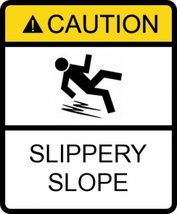 We moved on to discussing informal fallacies and how to identify them. An informal fallacy is an argument that is usually psychologically persuasive but logically weak. It is like a “counterfeit” argument - a type of argument that may seem to be correct but which proves on closer examination to be invalid and misleading. Students should learn to recognize these fallacies and avoid using them in their writing and debate. [We explored informal fallacies of definition in a previous class (2/17/14)]. Emotional appeals often constitute the source of persuasion in an informal fallacy. We term these fallacies as "informal" because they are most often found in the everyday exchanges of ideas, such as newspaper editorials, letters to the editor, political speeches, advertisements, conversational disagreements between people on social networking sites and Internet discussion boards, and so on. I provided the students a handout with definitions and examples of some of the most common informal fallacies. The Internet Encyclopedia of Philosophy provides a more thorough list of fallacies for those interested in exploring the topic further.
Persuasive EssaysI met individually with students to provide my comments and suggestions for improving their persuasive essay drafts. Students should continue to work on finalizing their drafts and continue to email me the updated essays. All are working at their own pace and at various stages of completion. HomeworkIn addition to continuing work on the individual persuasive essays, students should collaborate with their partners to write the infomercial they began in class. Come next week prepared to put the pieces together and make your presentation to the class. Don't forget to bring your product prop and your list of fallacies used in the commercial!
with Kim Rodgers Ancient India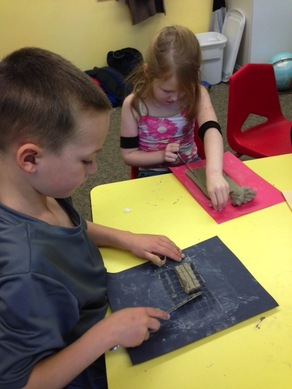 This week we began our exploration of Ancient India through the waterways that tie Ancient Mesopotamia to India through trade. We discovered how important water was to their survival, providing not only trade routes through the Indus River, but also fertile soil for farming and clean drinking water through the use of wells. Ruins of Mohenjo-Daro were discovered in the Indus River Valley in the 1920s, which revealed a complex system of drains that extended through the city. The students were also delighted to hear that they had toilets! We focused on the homes of the city which were built out of mud bricks. We used clay to carefully cut our bricks into sizes which will be useful when building our own Mohenjo-Daro next week. We talked about how they might have made the bricks, using sand, dirt, grasses, and water to form the right consistency. I was toying with the idea of making our own, but maybe when it warms up a little! It seemed too messy of a project to do indoors. 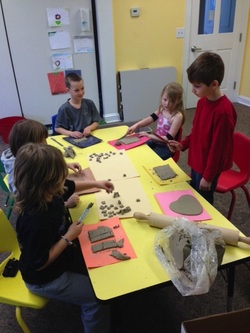 Here is a link to explore containing many photos of the ruins of this ancient city. Next week we will assemble our own version, looking specifically at how important their drainage system was to life during that time. See you next week! with Leigh Ann Yoder Cards and Coins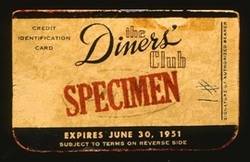 It was great to be back with the class this week and it really seems they enjoyed their challenge last week. We started class with a brief overview of the semester project. I will be providing more specific details at the end of this update. Our story this week was about the invention of the credit card and how it began because one man was embarrassed when his bill came at a restaurant and he found himself without any cash. He first created the Diner's Club card which quickly caught on and turned into the world wide credit card systems we have today. This week's challenge was to create a coin sorting machine. The teams were provided with cardboard, tubes, tape, straws and popsicle sticks. All three teams spent time brainstorming and each came up with unique solutions to the problem. I was very pleased that all teams took the brainstorming phase seriously and thought up very creative and practical solutions, however, each of the teams found that the implementation of their design was much harder than anticipated. Since the students were not able to complete the challenge this week, I asked them all to go home and think more about it. They can even test out some prototypes and bring in more cardboard for next week (some felt that it was easier to work with the cereal boxes). Please note: they are not permitted to bring in a completed machine. The machine must be built in class with their teammates, but talking with adults, gleaning ideas and testing, is allowed. Important Note on Teamwork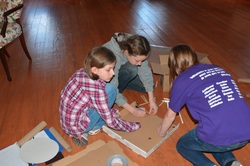 As you are aware, teamwork is a major component of this class, and it is really the reason for performing these challenges in a classroom environment, because as homeschoolers, this is one thing we can not recreate at home. I feel the students have been working well together and making progress in their team building skills. This week I did notice some struggles, probably because the building phase was harder than expected. Some teammates wanted to change the direction of the original plan without the consent of other teammates and this caused friction. I would like to see the students work through these difficulties and ask for your encouragement at home. Learning to navigate these issues successfully will become a lifelong skill! Project Details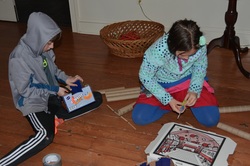 At this point the students are finalizing all of the materials they need for the first panel of their tri-fold boards. Please purchase one if you have not already done so. The first panel is the hardest and the most time consuming. I would expect it to take us at least another 2 or 3 weeks to complete. First Panel RequirementsName of chosen field (ex. Electrical Engineering) Why I choose the field (Three reasons - first assignment) Brief Description of the field (one paragraph - second assignment) Job Description (third assignment) Interview with an Engineer or Report on Famous Engineer (fourth assignment) In Addition students can add anything that pertains to the above. They can be as creative as they like! The Second Panel will focus on past, present, and future projects, inventions, and ideas in the field. More details will follow, but this will be the most visual panel of the board. The Third Panel will focus on a hands-on project or challenge relating to the field. Again, more details will follow. Homework!!!SEMESTER PROJECT: The students are not ready to start putting their first panel together as I have much of their work which will be returned to them next week. This week they should focus on completing any missed assignments from the first panel and think about additional material they can add such as pictures.
Coin Sorting Machine: Continue to brainstorm your machine. Try some prototypes. Talk to parents, siblings and friends. Email your teammates. Bring in cardboard for next week if you would like. The Story of Inventions (optional): Catch up week! You should be at the end of chapter 9. with Michelle Cameron Today's Story Critiques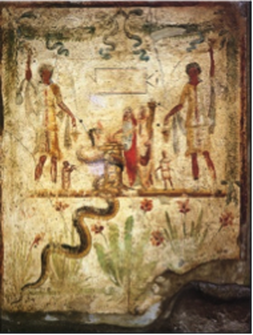 We got through everyone’s stories today. Among the comments we made:
Historical Fiction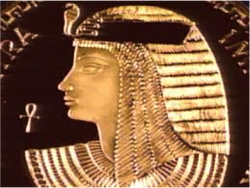 Today we talked about writing historical fiction. As a historical novelist myself, I explained that there are really three types of historical stories:
Each student selected a card with a historic character. They then began a story about this character. We discussed:
Homework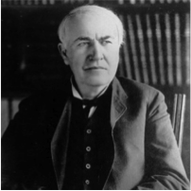 For homework this time, I’m asking everyone to continue to write their historical story. If they’re so inclined and inspired, they can always work on something else in addition. But please make sure they bring in a complete historical piece for next week. See everyone next week! Reviewing Essay StructureWe began class this week with a brief review of the structure and organization of the persuasive essay. Students have been working on organizing their topic sentences (arguments) and paragraphs in the body of their essays for the past two weeks as homework. One area many students find challenging is paragraph development - keeping paragraph content focused and unified to support the topic sentence. "Paragraph sprawl" occurs when digressions pop up in the form of irrelevant details or a shift in focus. Each paragraph should contain logical, coherent thoughts that build toward supporting the main idea (argument) of that paragraph. And, paragraphs should be arranged within the overall essay so that the order of ideas presents the strongest case to support the thesis. During class I met individually with those students that had emailed me copies of their drafts for review. I provided my comments and suggestions for both organization and content. I will continue to meet with students briefly each week until drafts are in final form. The Power of Analogy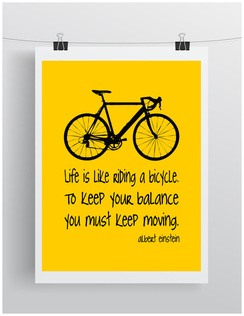 The type of argument most students have been using in their essays so far is what is generally known as testimony (expert opinion, facts, statistics, personal experience). Today we discussed the use of comparison - specifically analogy - as another effective tool. An analogy supports a conclusion by examining the similarities between two examples and can be a very powerful device for constructing strong arguments. Most often, analogies compare abstract or hard to explain concepts to something more familiar and provide the reader with an "aha!" moment. Using our curfew scenario (from our first class) we discussed which of the following analogies best communicates the definition of curfew that students would wish to convey in their argument:
For our in-class writing exercise, students paired up and were asked to choose from four possible topics:
Their assignment was to collaborate on preparing an outline for a persuasive essay, arguing one side of the topic. They needed to formulate a hook, a clear thesis statement, and 3-4 topic sentences for the body of the essay, one of which needed to use an analogy as a line of argument. Homework
with Leigh Ann Yoder & Ed Insel Photos Needed to Decode MessagesThis week, Mr. Insel subbed for Ms. LA while she was away on vacation. Here are Mr. Insel's notes… Class went well -- we completed the triangles (how difficult it can be to verbally convey information), morse code (they used their hands, but I had them add some signs to indicate when a letter ends and when a word ends) , private code (able to encode and decode messages within a team), and public coded messages. Two teams used the same code, and the other two teams used pictograms as their code. I had them write their encoded messages on large post-its, and I took snapshots of them after they left. They wanted to be able to try to decode the other teams’ messages during the week. I explained the scoring: 5 pts for each word correctly decoded on any of the sheets, 10 bonus pts for correctly decoding the entire message on any of the sheets (photos below). Students: Here are the photos needed for decoding the messages started in class this week: with Ed Insel Project ManagementWe started class on Monday by checking the engineering drawings the students worked on during the week. There was some really excellent work done. However, being able to communicate precisely the product you need to have fabricated is only half of the competency: you also need to be able to read drawings and fabricate products from them. So that’s what we did! The class traded drawings and built the intended object. This is not a deep dive into drafting but it conveyed its essential nature, and the students will use this skill as they move on to actual projects. Our topic this week was Project Management. This is the last of the fundamental engineering skills we’ll be covering. I explained the ideas of defining a goal, breaking it down into actionable steps, setting a schedule and budget, executing the project, and finally reviewing how it went and what could be done better next time. I used a personal example of building a highly-complex, highly-customized piece of equipment used in the production of every semiconductor device, from memory chips to LEDs to lasers to microprocessors. They were introduced to two of the most common communication tools: Pert charts and Gantt charts. Next week we’ll finish the project management topic and begin studying the role science plays in current events, locally and globally. I will also be lecturing on the nature of light and how the sun’s energy is turned into useful energy on Earth. We’ll kick off the first of our hands-on projects: using solar cells to power an electrical device. Homework for Next SessionAssignment 1 The students worked on mini-projects in groups. They started to list the steps they need to go through to achieve the goal, and for our next session I want them to:
Example of one type of Pert chart: Here are the lists that the groups finished before the class ended:
Team A is baking a cake. So far, their steps are: get supplies; open box of cake mix and put in bowl; crack two eggs into bowl; soften butter in microwave; add butter to ingredients; measure oil and milk, then add to the bowl; preheat oven to 325 degrees; grease and flour a cake pan; mix ingredients; pour mixture into pan; set timer; put cake in oven; take cake out of oven. Team B is going to the beach and returning home without a sunburn. Their steps are: pack; get gas; drive to beach; put on sunscreen, set up area, have fun; re-apply sunscreen every hour; pack up stuff and put it in the car; leave the beach; avoid car accidents on the way home; unpack once home; relax. Team C is going camping and coming safely home. Their steps: pick a destination (a glacier); decide when (spring break); decide how to get there (drive); pack; get gas; arrive; set up tent; camp, hike, sleep, and eat; pack up; go home. Team D is building a tree house. Their steps: find a good tree; create a dimensioned blueprint (use titanium supports); find materials; determine weight limit; assemble; add as many additional features as they can within weight limits (ladder, beds, TV, beanbag chairs, game console, pantry, microwave, minifridge; laptops, closet, hot tub, porch); enjoy it; rent it out. Assignment 2 Please have your student choose a current event, bring it to class, and be prepared to explain 1) the event they chose and 2) the role that science plays in it. Mine will be the credibility of the size of Facebook’s user base. |
Categories
All
Archives
May 2016
|

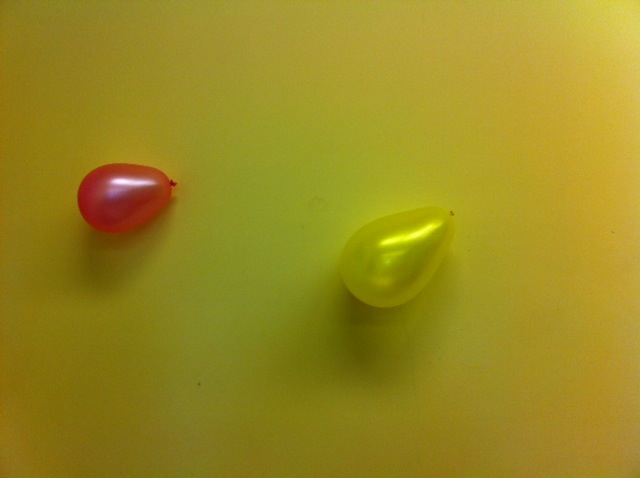
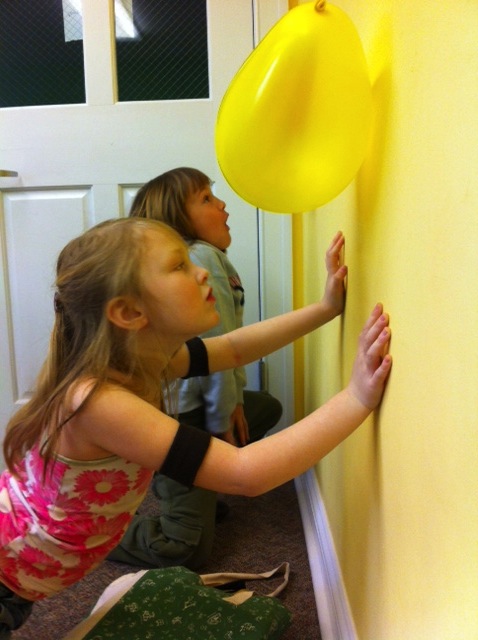
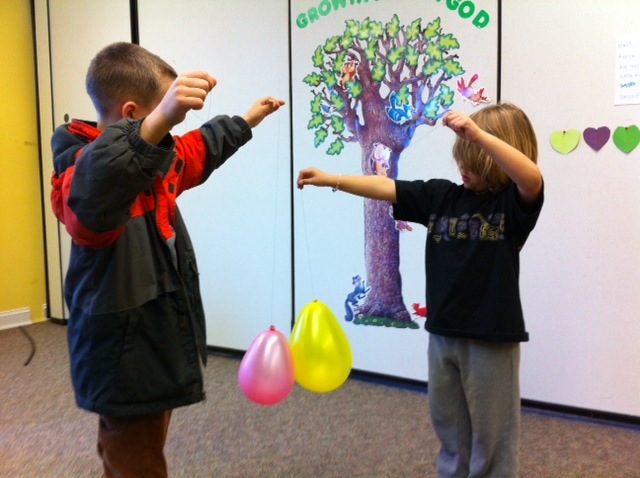
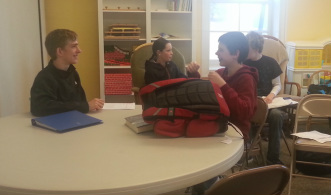
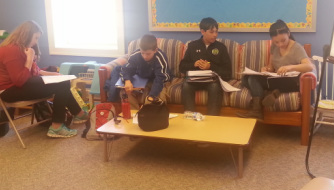
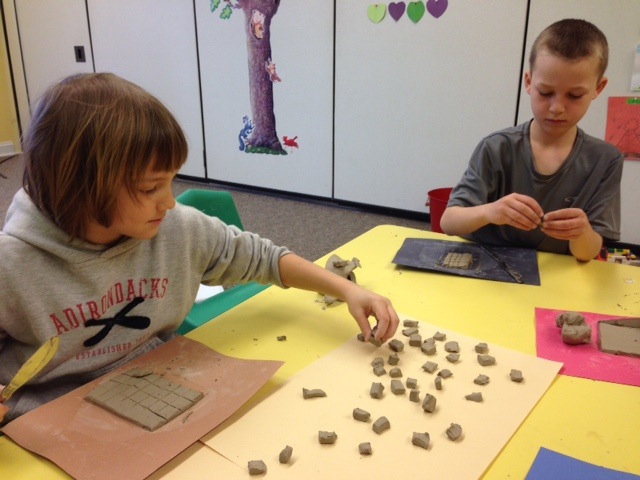
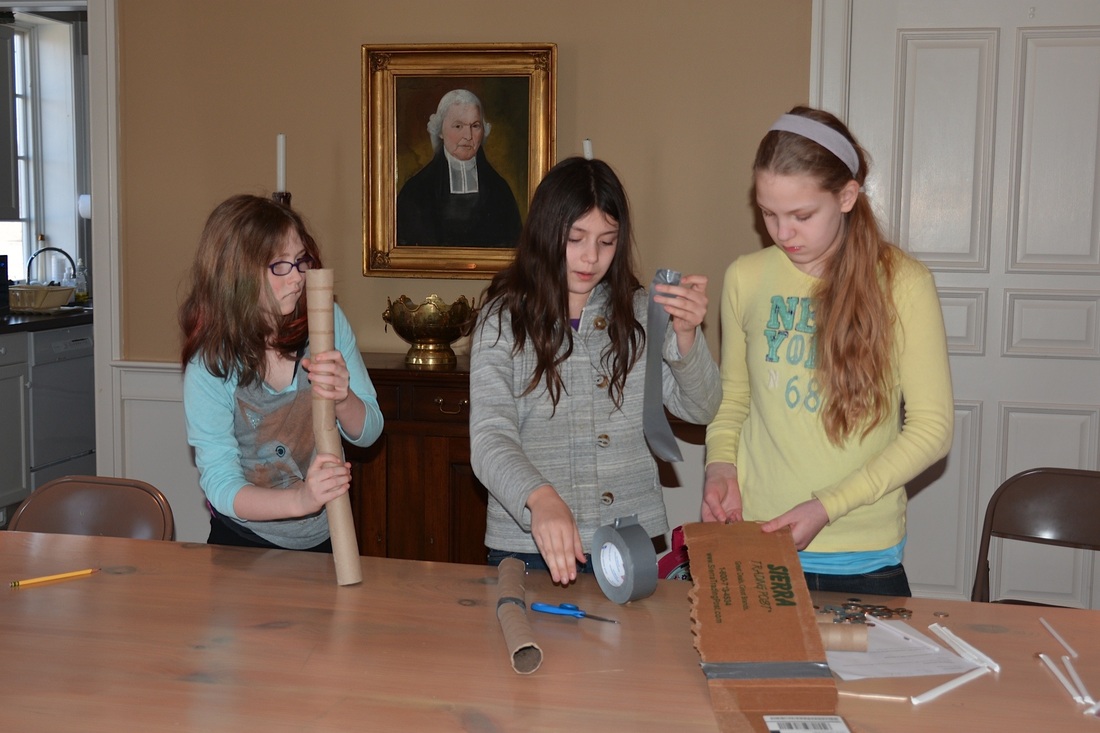
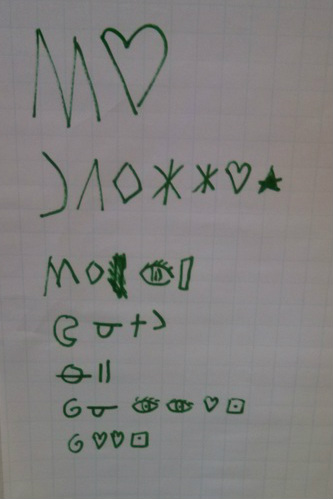
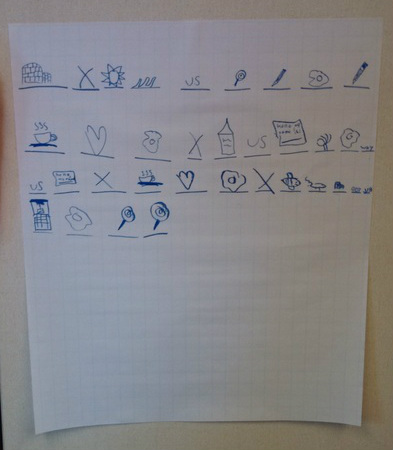
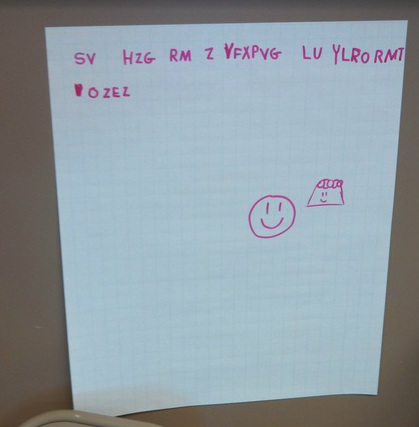
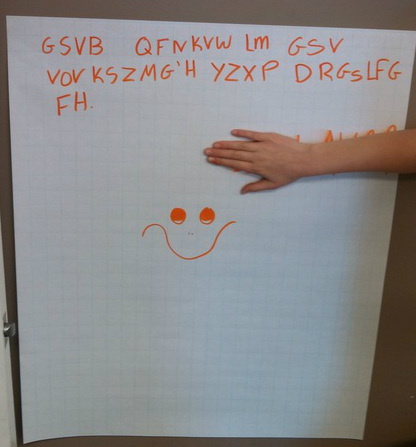
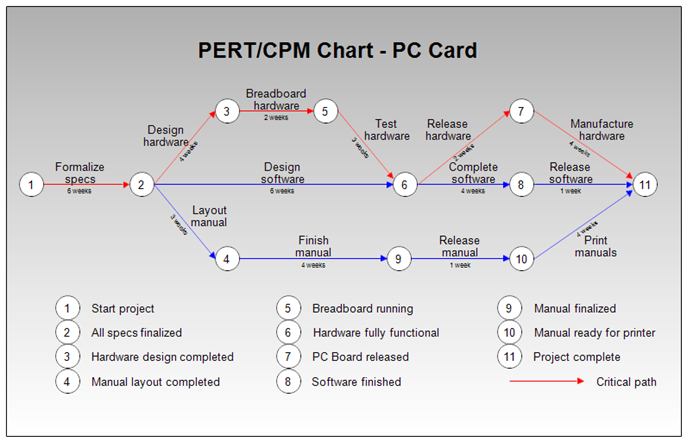
 RSS Feed
RSS Feed